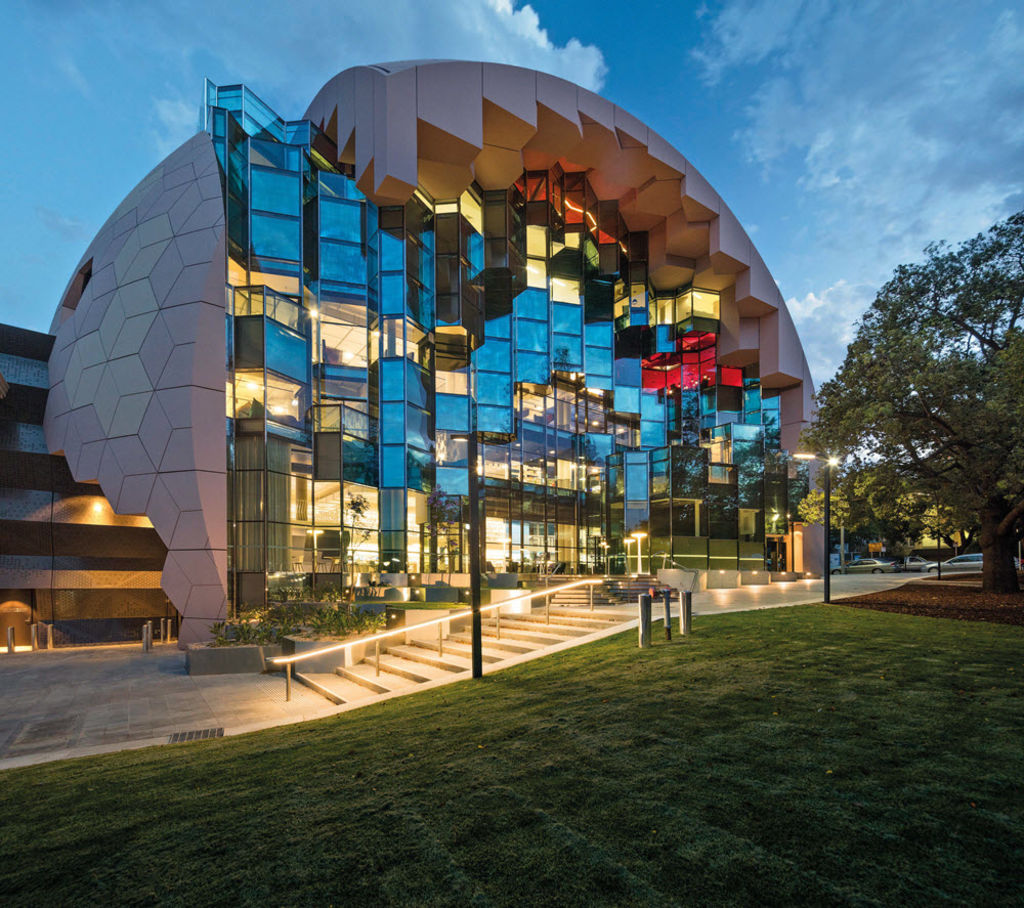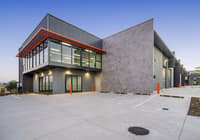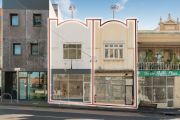
Great architecture not just found in Australia's big cities
Remarked-on, neck-craning, must-photograph new public and commercial architecture used to be showcased mainly in the cashed-up streets of the state capitals. Not any more, according to many of the major award winners and commendations in this year’s AIA National Architecture Awards.
Announced on Thursday night, the big winner has become a new landmark at the gateway point of fast-growing regional Geelong, in Victoria.
Rising behind the classical and sober shape of the Geelong Art Gallery, the extraordinary eight-storey, geodesic-style dome that is partially clad in hexagonal tiles, has been compared to “a crystalline alcove” by Ian McDougall, one of the founding directors of the influential ARM practise that took out the coveted Gold Medal, and the Sir Zelman Cowan Award for Public Architecture with the building.
A rigidly rectangular and apparently rusting South Australian building that has been designed to look like a library, and indeed is one, the South Australia Drill Core Reference Library, has been built to hold 130 years of that state’s geological history.
Sited in suburban Adelaide, it was designed by Thomson Rossi Architects. And costing some $32 million, its function is to collate 7.5 million metres of drill samples for those who desire to leaf through such hard-core data. It won the Colourbond Award for Steel Architecture.
 The South Australia Drill Core Reference Library, by Thomson Rossi Architects. Photo: David Sievers
The South Australia Drill Core Reference Library, by Thomson Rossi Architects. Photo: David Sievers
Down on Tasmania’s tourist-busy east coast, is a structure so strange that even its architect Peter Walker, of Cumulus Studio, labels it “a folly”.
Devil’s Corner Winery, in the Freycinet hinterland, has largely been made out of old containers arranged as if they have just fallen off the back of a truck and were bolted together where they lay.
The four-level, timber-clad tower with its black box-like outgrowths is double purposed. It’s there to get visitors to turn in off the highway and to give them a vantage to look out over beautiful Coles Bay and the Hazards.
 Devil’s Corner Winery, in Tasmania, by architect Peter Walker of Cumulus Studio. Photo: Tanja Milbourne
Devil’s Corner Winery, in Tasmania, by architect Peter Walker of Cumulus Studio. Photo: Tanja Milbourne
Brown Brothers hopes this re-purposed arrangement that won Cumulus a commendation in the awards’ commercial category will also help them sell some wine.
Queensland came up with two interesting and applauded new buildings. One is a redeployed 1920s packing shed that has given the old dairying centre of Toogoolawah, in the Brisbane Valley, a destination in the form of the new Condensery-Somerset Regional Art Gallery.
The emerging practise of PHAB Architects vamped up and expanded the graphic shape of the once Nestle packing facility that is now all red ochre on the outside and all white and gallery-cool on the inside. For it they won an award for public architecture.
 The Toogoolawah Condensery Packing Shed, Art Gallery and Workshop, Queensland, by PHAB Architects. Photo: Andrew Manson
The Toogoolawah Condensery Packing Shed, Art Gallery and Workshop, Queensland, by PHAB Architects. Photo: Andrew Manson
At Coloundra, on the Sunshine Coast, an eye clinic with the same name as the road it fronts, photographs as being a lot larger than its actual single level, sloped-roof scale. The illusion of height in the Ormuz Specialist Eye Clinic, by Loucas Zahos Architects, derives in part from the forest of timber and aluminium verticality fronting the tall glazing components. It was also commended in the commercial category.
Of the entire 32 awards in the 14 categories, plus the 12 commendations, the jury called the 2016 competition a worthy pageant of architecture that is of “significant benefit and contribution to our cities and regional centres”.










